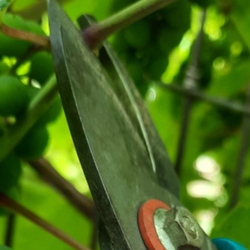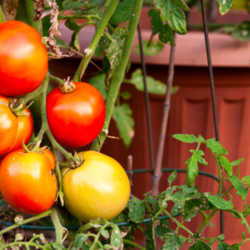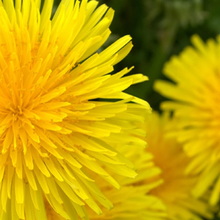I have had the good fortune this summer to watch and learn as my neighbor, Barry Ratihn, increased the number of grape vines he is growing for wine, requiring hundreds of feet of new, substantial supports. Barry’s existing vines already covered perhaps a quarter of an acre and he easily doubled that. There are now a total of 200 grape vines, half red grapes and half white grapes, including a Virginia native grape, Norton. I don’t propose to explain all the variables in grape trellising here, just show my neighbor’s very professional job. I understand he spent months doing research and visiting many vineyards before beginning this project. I imagine the whole viticulture business would fill several books!
Barry’s first step was, of course, the layout. Next was attaching an auger to his tractor PTO (power take-off) and drilling all the post holes, 24 inches deep and 20 feet on center. The rows are 10 feet apart, matching the existing rows. The poles are round pressure treated posts, 5” diameter and 10’ tall, set in the clay soil, tamped and plumb.
 |  |  |
| New Posts with "H" Post Bracing | Tensioning the Wires | Existing Poles with vines |
At each end of each row there is an end-post assembly (a horizontal “H” brace between 2 posts) and a brace wire, which keep the poles from leaning in when tension is later applied to the wires in the rows between the posts. The smooth wire used is a 12.5 gauge high-tensile galvanized wire. The tension on each wire is set by using an in-line wire strainer with a heavy clip and manually tightening the tension to about 250 pounds. (This wire will begin to stretch at about 1,000 pounds of tension, and will break above 1,500 pounds of tension.) Stringing the wire is definitely a 2-man job, and Barry had his son-in-law to help. The stiff, coiled wire is under a lot of tension and flies everywhere as it is released from the spool or spinning jenny. Both men suffered many cuts, pokes and scrapes stringing the wire; wearing safety glasses during this phase is crucial!
There are a total of 5 horizontal wires (2 are parallel along the top row) strung to accommodate all growth stages, training, pruning and harvesting of the grapes. Stringing the wires at 2’ intervals begins at the bottom and works up, tensioning each wire as it is set. Barry also used his auger to dig the holes for his new grape vines; there are 3 vines planted between each set of poles. Each new vine is encased in a biodegradable cardboard ‘vine shelter’ to protect it during the first year of growth. The vine shelters also control unwanted lateral growth.
 |  |  |
| New Vines Set Out in Vine Shelters | New Vine Starting 'Training' | Parallel Top Wires |
One photo shows the newest vine growth just reaching the first training wire (which is really the second wire), and being trained to it. The lowest wire merely serves as a stabilizer for the new plants in their vine shelters. Another photo shows more mature vines being trained to additional, higher wires. The wires are spaced at 2’ on center; the top set of parallel wires is 8’off the ground and the vines ultimately grow between these top 2 wires. Some advantages of this system besides pest management and harvesting, include training the vines to wires allowing easier removal of some leaves, which exposes the grapes to more sunlight (but not enough to burn the grapes). It also allows for more fungal resistance.
 |  |  |
| Older Vines Being Wire-Trained | Mature Vines | High, Soft Enclosure Fencing |
The entire grape vine section of his property is enclosed in a soft-material fencing tucked into the soil at the bottom, and 10’ high to keep out the abundant deer and rabbits. The vineyard is fully exposed to high winds coming off the hill behind it, so the structure needed to both support the heavy fruit and resist high winds.

Having a small backyard garden myself, I wouldn’t need this kind of grape trellis for a just few grape vines. However, if you are interested in starting in viticulture, I hope this article has given you some insight about one system of trellising.
Photo Credits: All photos are by the author.
















